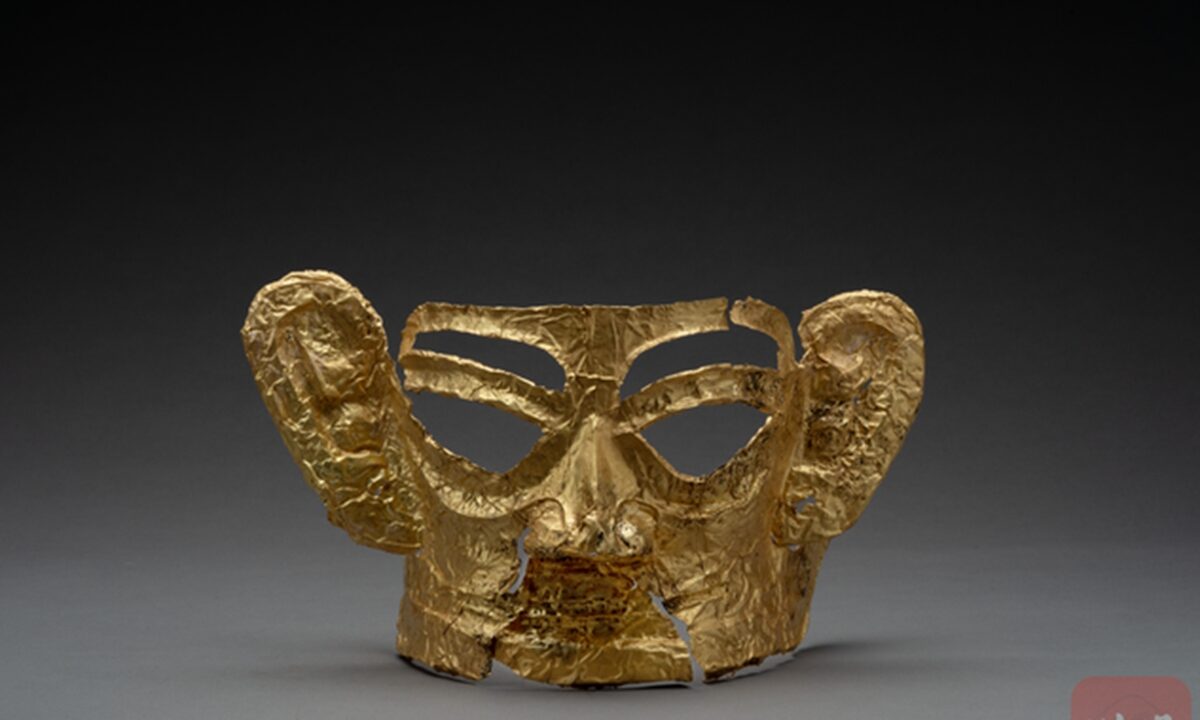
© Sichuan Provincial Cultural Relics and Archaeology Research InstituteA gold mask unearthed from Sanxingdui Ruins: Chinese cultural relic authorities on Thursday revealed some new discoveries from the mysterious Sanxingdui Ruins in Sichuan Province, including a gold mask, a huge bronze mask, bronze statues and ivory carvings.
of the Sanxingdui Ruins, the local cultural relic authority announced on Thursday.
The golden mask shares
a similar size and the same facial features as one of the bronze heads unearthed at the Sanxingdui Ruins.
"We speculate that this golden mask was a part of the face of the bronze head instead of a separate object," Ran Hongling, head of the Sanxingdui Institute of Archaeology, told the Global Times.
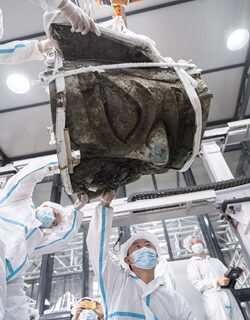
© Courtesy of Sichuan Provincial Cultural Relics and Archaeology Research InstituteRelics unearthed from Sanxingdui Ruins
Meanwhile,
a large bronze mask, 135 centimeters wide and 74 centimeters high, was excavated from the third pit. It is
the largest bronze mask ever discovered at the site.
Chinese archaeologists said that No.4 Pit at the Sanxingdui Ruins
dates to 2,966-3,148 years ago, during the late Shang Dynasty (c.1600BC-1046BC), according to a document from the Sichuan Provincial Cultural Relics and Archaeology Research Institute sent to the Global Times on Thursday .
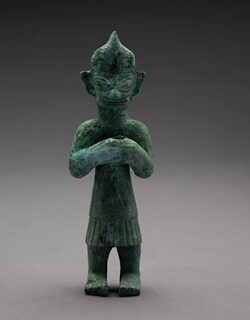
© Sichuan Provincial Cultural Relics and Archaeology Research InstituteRelics unearthed from Sanxingdui Ruins
Among the newly unearthed bronze statues, one standing figure is being jokingly called the ancient "ancestor" of the popular Japanese superhero "Ultraman" by many Chinese netizens due to
the pointed crown on its head and his large pair of protruding eyes.
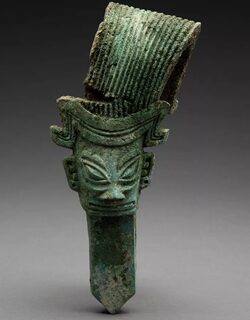
© Sichuan Provincial Cultural Relics and Archaeology Research InstituteRelics unearthed from Sanxingdui Ruins
Another bronze relic that has struck the fancy of Chinese netizens is one with a special hairstyle that curls back into an exaggerated form shaped like tiles. Many Chinese netizens commented that the hairdo reminded them of the crown-shaped hat worn by Zhuge Liang, a Chinese statesman and military strategist that lived during the Three Kingdoms period (220-280). Chinese experts
speculate that the relics' head was once connected to other bronze components.
And still another bronze statue has also captured the attention of many Chinese archaeologists due to his unique pose. The figure is kneeling down with his head turned to the right and his hands are on the front left side of his body, but
most interestingly, the figure is standing on the balls of both feet with his heels high in the air.
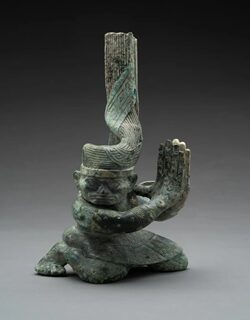
© Sichuan Provincial Cultural Relics and Archaeology Research InstituteRelics unearthed from Sanxingdui Ruins
According to the document, three similar bronze statues have been excavated from No.4 Pit. The artifacts' shapes and decorations make them unique finds that are valuable resources for the research of the religion and social system of
the ancient Kingdom of Shu, one of the three kingdoms that ruled the region where the Sanxingdui Ruins were discovered some 3,000 years ago.
Currently, the third and fourth pits
have produced 729 and 1,073 relics, including three relics made from unknown materials. Excavation of the third pit is nearly complete. Meanwhile,
200 ivory relics have been discovered in the eighth pit, and it is estimated that all of these ivory pieces will be extracted from the pit come October. Besides the ivory relics,
a bronze alter which experts called a relic with the "national level" has been unearthed in the eighth pit.





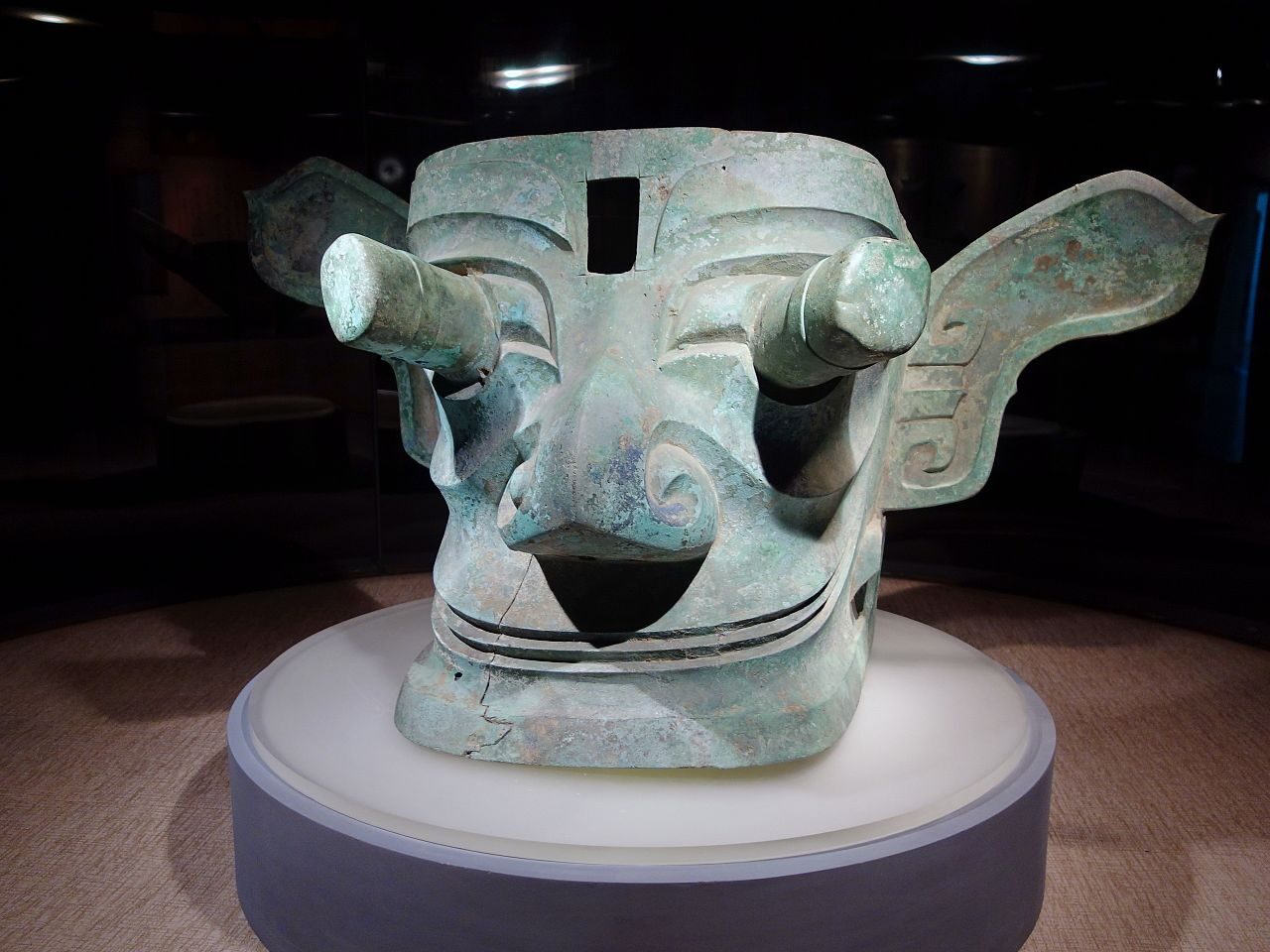
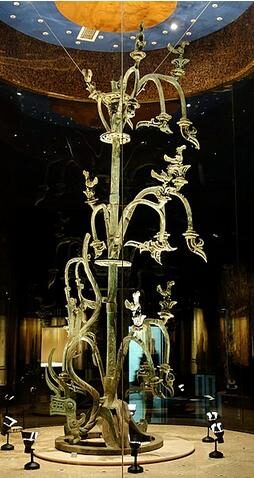




R.C.